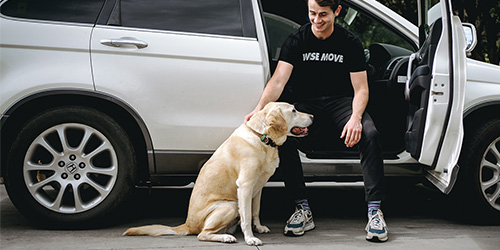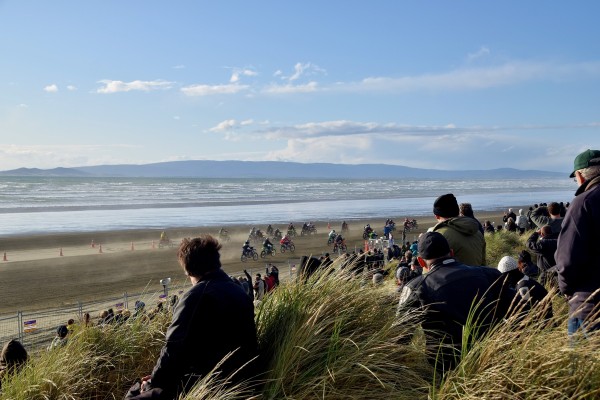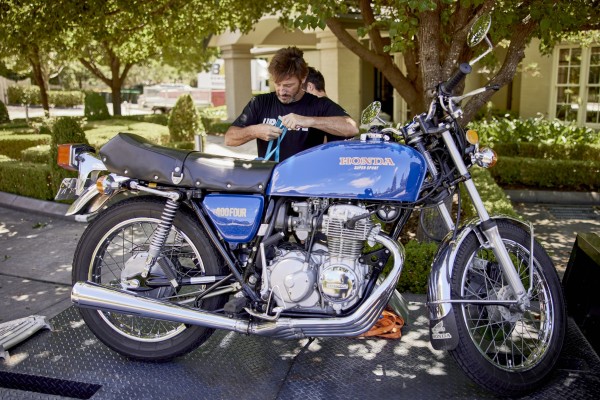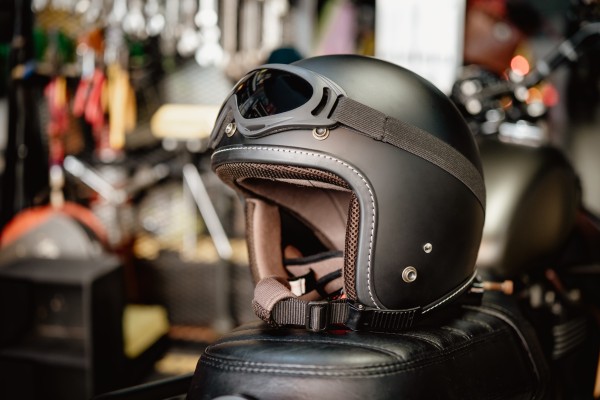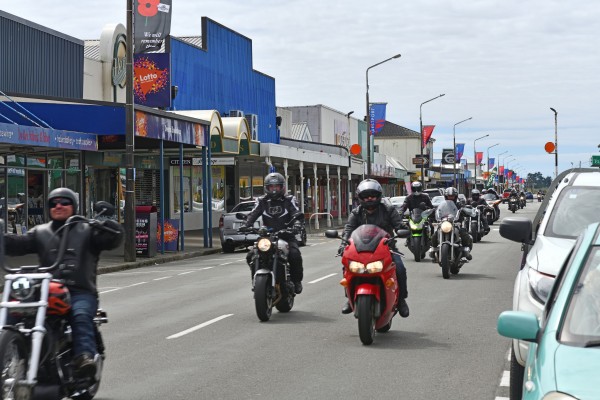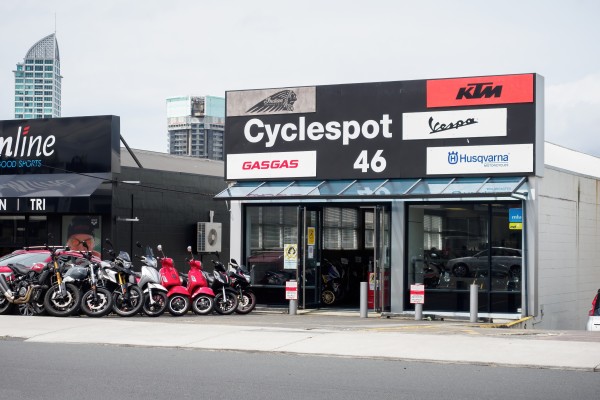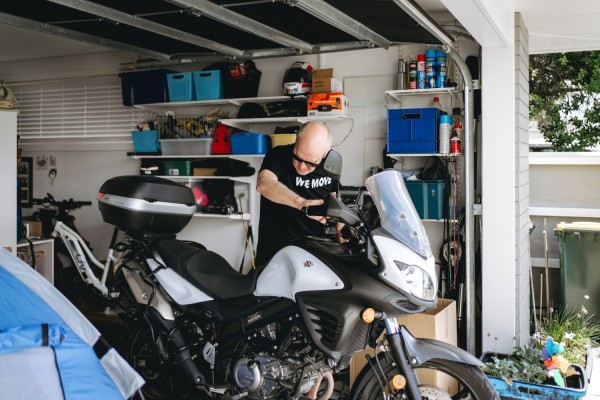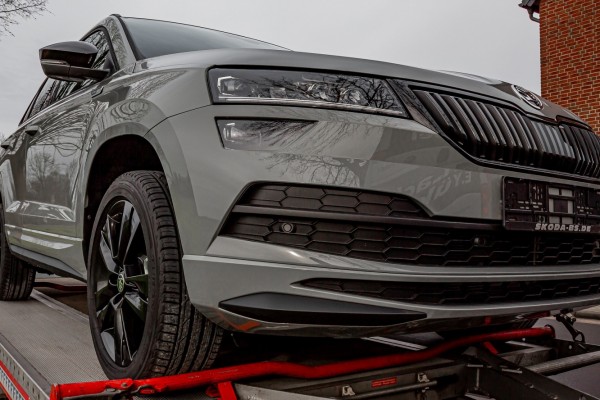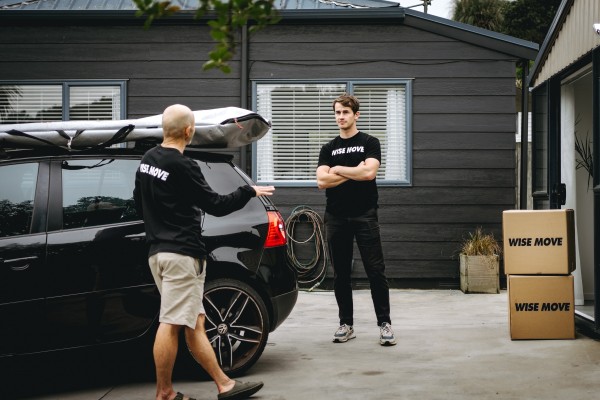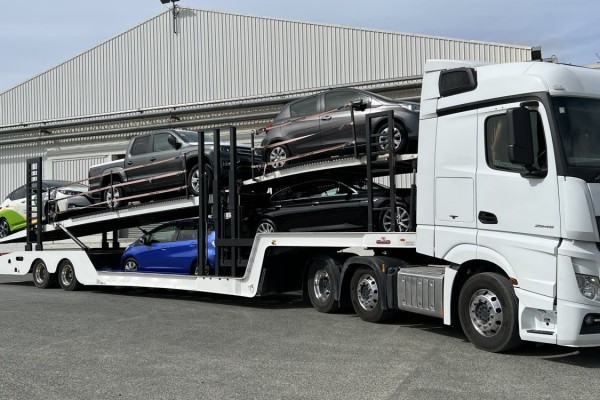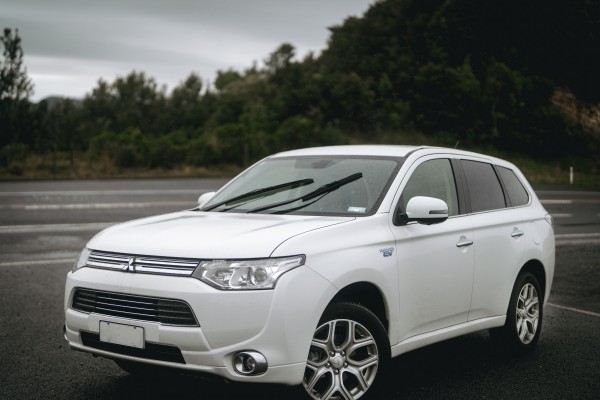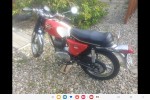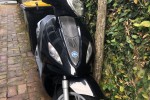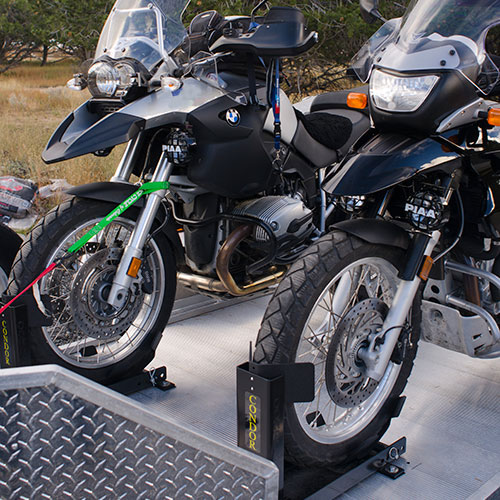How to Clean Your Motorbike
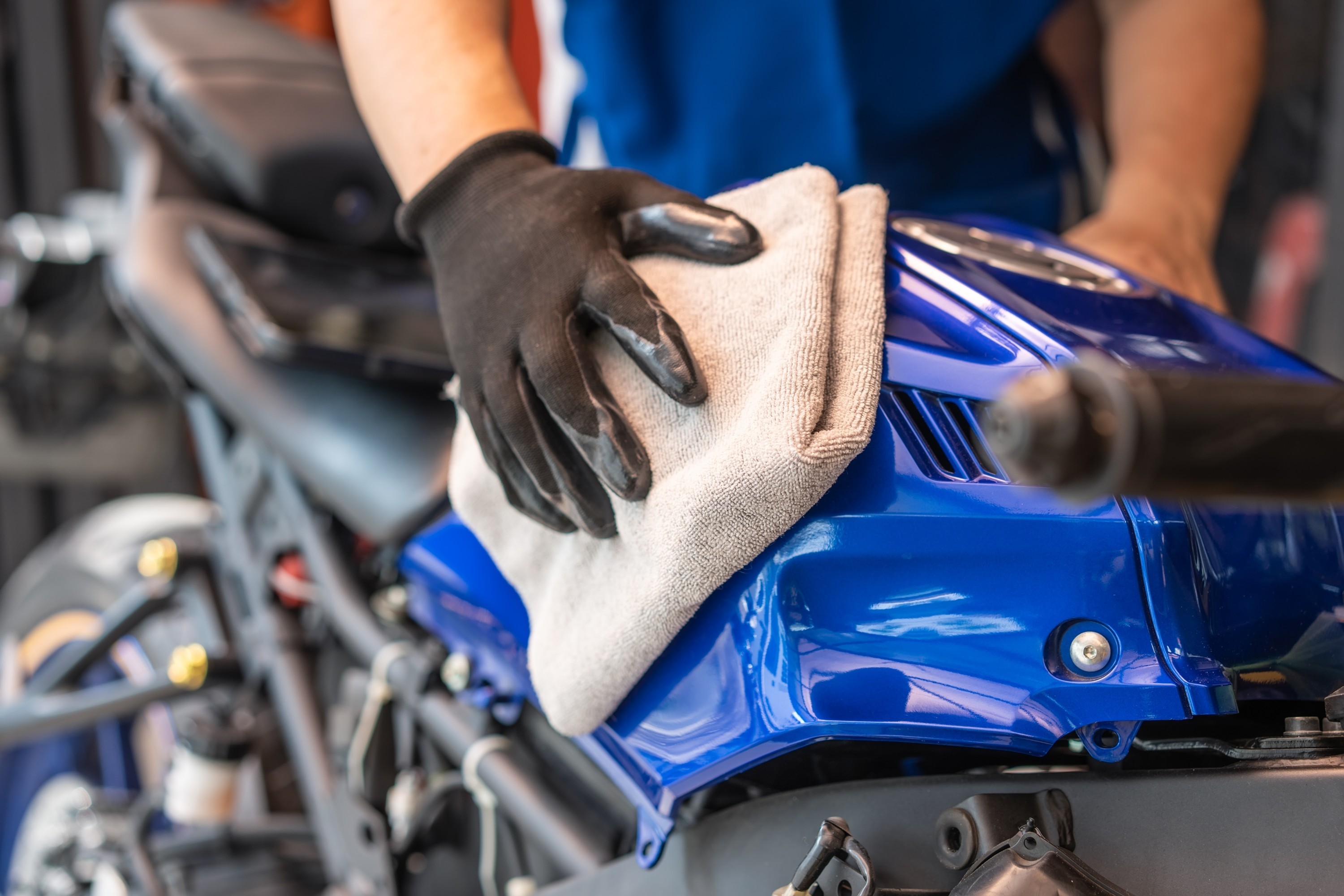
A motorcycle is a significant financial investment that, once purchased, you should maintain. Looking after your motorbike will ensure that it runs smoothly, is safer to ride and costs you less in repair fees in the long term. Here’s everything you need to know about cleaning your motorbike at home.
1. Keep your bike cool
Never run maintenance on your bike while the bike is on. Before you start any work on your motorbike, ensure the exhaust and the engine have been turned off and are cold to the touch. Bike engines and exhausts will burn your skin if you touch them.
2. Lift your bike off the ground
The easiest way to clean your bike is to lift it onto a bike stand to get the wheels off the ground. During the cleaning process, you’ll need to scrub the tires, which is hard to do with the bike on the floor. Placing your motorbike on a bike stand will ensure that it is raised but is still secure. Using blocks or a makeshift stand could make your bike unstable and cause it to fall over while you are cleaning.
3. Rinse your bike down
Before you tackle the dirty work of cleaning your motorbike, give it a rinse by blasting it with a hose. This will loosen any big clumps of dirt and help remove any surface-level stains. Give your bike a rinse with the hose in a high-pressure setting, covering any areas where dirt and mud have splattered.
4. Invest in bike cleaning products
Don’t overlook speciality cleaning products when looking after your motorbike. High-quality cleaners explicitly made for motorbikes cut through dirt, grease and oil better than other products on the market. They also keep your bike cleaner for longer. Household products can remove the protective wax from your bike and are best avoided.
Detailing products will help your bike to shine, avoid swirls or scratches in your paintwork from cleaning, and help clean away tough dirt and grime in half the time. Specialist brushes will also help you get into hard-to-reach places like spokes and rims.
5. Start with the chassis and engine first
Work your chosen cleaner into the chassis and engine of your motorbike first. It’s always best to work out of direct sunlight, so make sure to park your bike in the shade. Apply the cleaner and agitate with a brush lightly. A speciality brush will ensure you’re not scratching the paintwork. The cleaner will work to loosen the dirt and grime and make it easier to remove. You may have to repeat this process several times to remove deep road areas first. Spot cleaning should help any really difficult spots.
6. Tackle bug splats
Insects can be one of the hardest things to remove from the surface of your motorbike. They may be small but can damage your paintwork if you try cleaning them too aggressively. Use a dedicated cleaner on your bike regularly. If that’s not possible, or you don’t have the time, a dedicated insect remover will help to remove dead bugs from your bike. Most products require you to spray, leave for a few minutes and wipe the residue away.
Be wary of scrubbing or picking at insects. A gentle approach works much better and won’t damage your bike.
7. Attack any tar spots
If you’ve been riding on hot roads in summer, you may find evidence of melted tar on your bike’s panels. A tar-removing solution is your best bet at removing tar without damaging your bike. Tar solutions contain more aggressive chemicals that help to dislodge these spots. You will usually find tar spots on the underside of your bike.
8. Rinse until your bike is clean
Once you’ve removed any tar, insects, dirt and grime, it’s time to rinse off your bike. The key to a high shine is in a thorough rinse job. Give your bike a thorough hosing and ensure you’ve rotated your wheels and removed all dirt between the spokes and rims. You’ll know it’s clean when you can no longer feel any trace of cleaning product on the surface. There should be no slimy or slick feeling when you examine your bike.
9. Check for chain lube fling
As the name suggests, chain lube fling is when the lube used to protect your chain ends up on other bike areas, such as the back wheels or side panels. Many regular cleaning agents aren’t strong enough to remove chain lube, so speciality products are the way to go. You should only use these products for chain lube.
You can also buy anti-fling chain lube, which will still protect your bike’s chain but reduces the amount of product that comes off the chain.
10. Dry your motorbike
Dry your bike off. While it is tempting to use an old sheet or a towel, these can ruin the finish of your cleaning. If you’ve gone through the trouble of using speciality products to clean your motorbike, invest in a good quality drying cloth. For the most part, these are pretty cheap. Dry your bike, turning the fabric and wringing it out if necessary.
Make sure you dry all areas of your bike, as stagnant water can lead to rust and corrosion.
11. Polish your motorbike
Polishing your motorbike will help to lock in the shine and also helps to protect your bike for longer. If your motorbike has raised or embossed lettering, polish around these parts, as wax can accumulate on the edges of the letters. Use polish on your bike, as per the instructions on the bottle. Once you’ve applied the polish as per the instructions, buff it off with a polishing cloth.
12. Use anti-corrosion spray
Finally, once you’ve finished cleaning your motorbike, treat the plastic with ACF-50. This spray helps prevent corrosion and protect your bike from existing corrosion. Rub it on with a cloth and leave it on. One coating can last for as long as 18 months. However, if you wash your bike, you’ll need to reapply it.
What do our customers say?
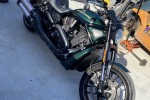



For every (wise)move





